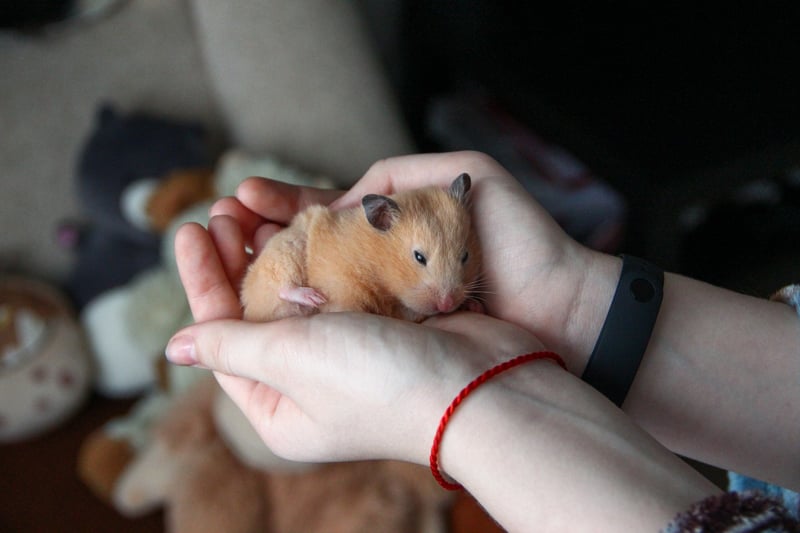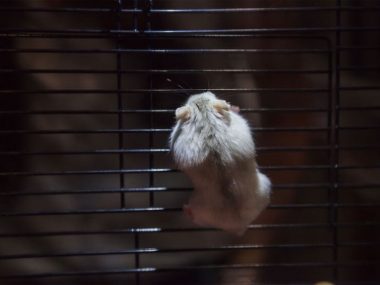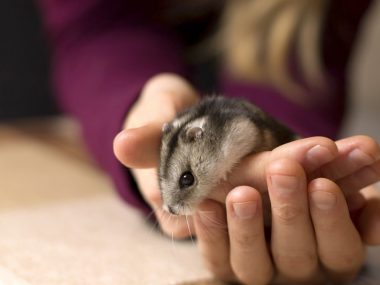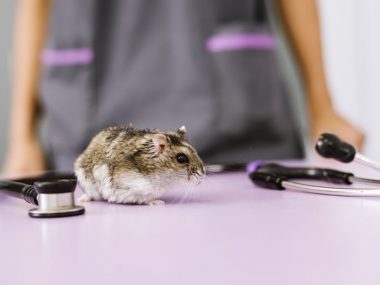Hamsters are not long-lived animals, and it is essential that you learn to recognize the 11 common signs of a hamster dying. Understanding what to expect when your hamster inevitably dies will allow you to deal calmly with the situation and take the appropriate steps to keep your hamster as comfortable as possible.
11 Signs your hamster is dying:
- Weight loss and decreased appetite
- Decreased urination and defecation
- Hypothermia
- Lethargy
- Loss of coordination
- Abnormal breathing patterns
- Confusion
- Involuntary vocalizations
- Convulsions
- Cardiac arrest
- Total muscle relaxation
The thought of death and dying is a frightening concept for most people; no one wants to dwell on the idea that they will need to say goodbye to their beloved hamster one day. However, educating yourself on what to expect when your hamster is dying will help reduce your anxiety surrounding the passing of your hamster.
Table of Contents
How Do I Know If My Hamster Is Dying?
Many people act as if dying is instantaneous, but this is not true; dying is a process with distinct phases. Active dying is also known as the terminal life phase and occurs in the days, hours, and minutes before a hamster’s death.
Active dying starts when the hamster’s body can no longer compensate effectively for failing body systems; there is a noticeable loss of life-sustaining body functions.
Signs your hamster’s death is imminent:
- Weight loss and decreased appetite.
- Decreased urination and defecation.
- Hypothermia.
- Lethargy and general apathy.
- Slow, labored, and irregular breathing patterns. You may also notice your hamster has an audible death rattle.
- As their brain becomes oxygen-starved, your hamster may appear confused or agitated.
- Loss of coordination and muscle control.
- Involuntary vocalizations may occur due to seizure activity or the hamster’s general confusion.
- Convulsions may include body contractions, twitching limbs, and occasionally teeth chattering.
- Cardiac arrest.
- Total muscle relaxation with involuntary urination and defecation.
The first phases of active dying in hamsters vary according to the underlying cause of death. Hamsters dying from chronic conditions (e.g., renal failure, old age, cancer) typically display all 11 signs of imminent death.
Whereas hamsters dying from acute conditions (e.g., trauma, cerebrovascular accident, severe diarrhea) may only present with a few of the symptoms. The first two symptoms are typically excluded in rapid hamster deaths.
How Do I Tell If My Hamster Has Died?
Signs your hamster is dead:
- A few hours after death, your hamster’s body will enter rigor mortis, and their bodies will become stiff and inflexible.
- If your hamster has a low body temperature, eyes open, and is unresponsive, they have definitely passed. A hibernating hamster will always close their eyes.
- If you notice your unresponsive hamster lying in a pool of urine and feces, they have already passed.
A Hibernating Hamster Can Look Dead
In cold temperatures, hamsters will hibernate, and their bodies enter a state of torpor; they eat less, their breathing slows (approximately 1 breath every 2 minutes), and their body temperatures drop.
A hibernating hamster may appear dead, especially to an inexperienced hamster owner. Although a hibernating hamster may appear lifeless, they are not; it’s the small but vital signs of life that enable owners to tell the difference between a hibernating hamster and a dead hamster.
The differences between a hibernating hamster and a dead hamster:
- Response to environmental temperatures
- Breathing rate
- Heartbeat
- Whisker reflex
Both hibernating hamsters and dead hamsters are cool to the touch and limp when picked up; thus, body temperature is not a reliable indicator of life in hamsters.
How Do I Tell If My Hamster Is Hibernating Or Dead?
Hamsters will begin to hibernate when temperatures drop below 46 °F (5 °C), although some hamsters will start showing hibernation-type behaviors at temperatures below 68 °F (20 °C).
If you are concerned that your hamster has died, gradually warm the room where their cage is until the room temperature is over 68 °F. A hibernating hamster will wake up, whereas a hamster that has passed will not.
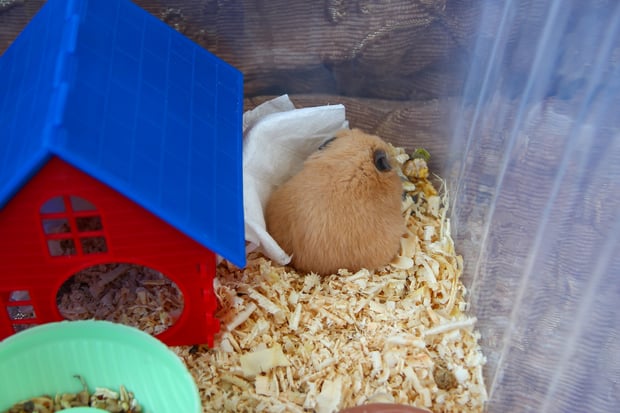
Hibernating hamsters will slow their breathing rate to 1 breath every 2 minutes. Watch your hamster for signs that they are breathing but remember to watch them for at least 10 minutes. A hibernating hamster will take a minimum of 5 breaths during this period.
It can be tricky to see the tiny breaths that a hibernating hamster takes, and thus it is often simpler for owners to try and feel for a heartbeat.
Using two fingers, apply gentle pressure to your hamster’s chest, just behind their elbows. The pressure is similar to what you would apply if you were to gently hold your hamster’s front end up or prevent them from running off.
In a hibernating hamster, you should feel a soft heartbeat gently beating against your fingertips.
Lastly, you can touch your hamster’s whiskers. A hamster’s whiskers are very sensitive, and lightly touching them will cause a live hamster to twitch their whiskers.
What Is The Average Hamster Life Span?
A hamster’s lifespan depends on their:
- Breed
- Genetics
- Lifetime care
- Health history
On average, a hamster lives between 1.5 to 2 years in the wild and 2 to 3 years in captivity. Roborovski dwarf hamsters tend to live longer than other domestic hamster species.
Is It Ok To Grieve My Hamster’s Passing?
Not everyone will grieve for a lost hamster. However, for some owners, their pet hamster was their reason for getting up in the morning. Saying goodbye to someone you love, whether it’s a human, dog, or hamster, is never a painless process.
It is essential to give yourself time to process and work through your grief. Some people find comfort in memorializing their hamster through a photo or putting their ashes into a piece of jewelry. Whereas other people want to bury their hamsters in a peaceful place and tell stories about the “good times.”
Regardless of how you choose to remember your hamster, never be ashamed that you loved your little pet enough to grieve for their loss!
Conclusion
No one wants to face the fact that their hamster will inevitably die; however, hamsters are not long-lived, and responsible hamster owners need to recognize the 11 signs of imminent death.
On average, a hamster lives for 1.5 years to 2 years, although a few long-lived individuals live long enough to see their 4th birthday. Regardless of how long your hamster lives, it never feels long enough!
It is essential to remember that everyone will react to their hamster’s passing differently; for some people, the grief is immense, while others don’t experience any distress.
Grief is dependent on the person’s personality and relationship with the hamster, not the quality of care they gave their hamster while their hamster was alive.
References
https://web.jhu.edu/animalcare/procedures/survival-rodents.html
https://www.onlinejcf.com/article/S1071-9164(11)00972-9/references
https://www.ncbi.nlm.nih.gov/pmc/articles/PMC2877298/
https://pubmed.ncbi.nlm.nih.gov/29247001/
https://www.vet.cornell.edu/facts-about-euthanasia-small-animals
https://health.clevelandclinic.org/grieving-the-loss-of-a-pet/
